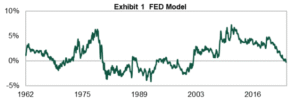Implications of the India Union Budget for the Technology Sector in India
On the 1st of February, India’s Finance Minister delivered the 8th consecutive Union budget. While the focus of several earlier budgets was to boost the economy via large Government Capital Expenditure (Capex) plans while setting the stage for the Private sector Capex to follow, the 2025 budget adds a new dimension. The focus of this year’s budget is to spur private consumption to boost an otherwise slowing economy while maintaining Capex and ensuring fiscal prudence. The good news is that it continues to recognize the importance of the technology ecosystem in bringing long-term growth to the economy, in line with the changing dynamics of the business world. This budget will have a positive mid- to long-term impact on the economy via the various initiatives it has announced, subject to all of them being executed on time. The budget aims to strengthen the foundations for the tech sector via setting up a digital infrastructure, easing supply side constraints (financial & skills), and laying the groundwork for self-reliance. It does so in a few ways: Digital Infrastructure Build Funding India AI Mission: According to IDC, worldwide spending on AI would cross $600B and India’s domestic spending on AI is going to cross $9B by 2028 (IDC AI and GenAI Spending Guide, 2024V2, Aug 2024). In this budget, the ‘India AI Mission’ is allocated $267M (INR 2000 crore) to boost AI infrastructure capability, ecosystem development, and policy and use case formulation in India. This will be aided by India’s plan of setting up an 18,000 GPU cluster to enable Indian startups to build LLMs and multi-modal AI systems. With this, India is positioning itself well to play a key role in global AI adoption of models, ethics and governance at a global level, in addition to being a potential use case capital of the world. Setting Up of National Geospatial Mission: The launch of the National Geospatial Mission to build geospatial infrastructure and data and modernize land records, along with the initiative to open private sector access to data and maps from the PM Gati Shakti portal, will give a fillip to technology startups focused on logistics, agriculture, weather etc. Creation of the Bharat TradeNet Platform: This initiative will leverage India’s Digital Public Infrastructure for unified trade documentation boosting exports. These announcements must be seen in the context of earlier announcements to drive AI innovation such as the launch of an AI Datasets Platform that includes non-PII data from different sources. The budget underlines the continued commitment of the Indian Government in building a robust foundation of data, infrastructure, capital and use cases for technology-led growth. Easing Supply Side Constraints Skill Constraints: One of the challenges the technology industry is facing is the skill gap between industry demand and market supply. According to the IDC FutureScape: Worldwide Digital Business and AI Transformation 2025 Predictions — India Implications by 2027, 55% of India-based organizations will experience digital skills shortages that will cause project delays, slowing AI technology implementations into the following year. To address this, the budget has increased the intake into IITs, created additional provisions for technology-related fellowships, and announced an additional AI Center of Excellence in addition to the ones announced earlier. In the long term, the announcement to create 50,000 Atal Tinkering Labs in government schools to encourage scientific thinking can be transformatory. Financial Constraints: One of the most effective proposals is the creation of the SIDBI Fund of Funds for Startups with a capital infusion of INR 10,000 crore (approx. $1.2 bn) and the Deep Tech Fund of Funds to invest in leading edge technologies. This will aid in ensuring promising startups can secure funding, thus paving the way for the next set of unicorns that will generate employment and revenues while potentially benefiting industries such as agriculture, education and manufacturing. According to IDC FutureScape: Worldwide Digital Business and AI Transformation 2025 Predictions — India Implications by 2026, 70% of India-based AI digital-natives, start-ups, and scale-ups will implement responsible AI policies to address trust concerns raised by IT and business leaders. We expect start-ups to leverage this fund effectively to strengthen their products with more focus on governance and responsible AI which will make their products more competitive and robust in addition to working on language models and use cases. Self- Reliance Over the years, the current government has introduced several incentives to boost local manufacturing to cater to global and local demand. The global demand for artificial intelligence (AI) and high-performance computing (HPC) will continue to rise, growing by over 15% in 2025, according to IDC ’s latest Worldwide Semiconductor Technology Supply Chain Intelligence report. In this budget, the government has decided to tweak and rationalize customs duties on several components in the manufacture of electronic products. This supports the long-term plan and aspiration to make India a manufacturing hub and promotes self-reliance in technology, among other things. Another notable announcement includes the National Framework for Global Capability Centers (GCCs) to promote tier-2 cities for setting up GCCs. This will boost local employment opportunities for technology talent across India and solidify India’s position as the hub for GCCs, thereby propelling business for IT vendors who serve the GCC space. In summary, the India Union Budget 2025 is forward-looking and has the government focusing on the right initiatives to position India as a strong and vibrant digital-driven economy. It reaffirms the Indian government’s faith in the Indian technology sector being a key driver for growth. Indian technology firms should leverage the initiatives launched by the government to innovate and produce cutting edge products and services. Download this presentation excerpt to learn how to navigate challenges and seize opportunities in India’s evolving digital business landscape. To leverage IDC India’s technology research and advisory expertise, contact IDC today. Vasant Rao and Sharath Srinivasamurthy contributed to this blog. source
Implications of the India Union Budget for the Technology Sector in India Read More »




